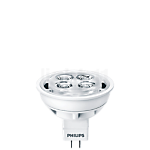The energy efficiency class gives insights into the
energy consumption of electrical devices, buildings or automobiles. The classification into letters was made on the basis of the American grading system with "A" being the best energy efficiency class (= low consumption) and G being the highest consumption class. The standard for quality class A was already defined in 1994 and corresponds to the state of the art of that time. In order to be able to reflect new technical developments, particularly in terms of electronic devices or household appliances, some products such as refrigerators, washing machines or televisions, additional efficiency classes were introduces (A+, A++ and A+++).
Energy efficiency classes also for lighting homes
In the area of lighting, the specification of the energy efficiency has been obligatory for manufacturers of household lamps with undirected light. Lamps with directed light, on the other hand, e.g. reflector lamps were long exempted from this labelling requirement. Since September 2013, however, there is a new EU regulation that requires all lamp manufacturers to identify all lamps. The new EU Energy Label also introduces the energy efficiency classes A+ and A++ for lights. Particularly efficient illuminants such as
LED, now can also be provided with the attractive A+ and A++ labels. Due to a new regulation from 2013, the classes G and G no longer apply. Only lamps and LEDs with a luminous flux of less than 30 lumens are exempted from the labelling requirement.
The classification into energy efficiency classes allows a concrete comparison of the energy efficiency of different lamps. In addition to the energy label, the lamp packaging also provides information on the luminous flux of a lamp, the power input in watts and the average
service life in hours.
The classes A+ and A ++ are represented by LED lamps with a particularly low consumption.
The energy efficiency classes A and B comprise
fluorescent lamps and
compact fluorescent lamps.
Incandescent lamps an be found under category E, previously they were also included in the phased-out categories F and G.
12V halogen lamps and 230V halogen lamps can be found under energy efficiency class B and C or C and D, respectively. They are the right choice if you want to save energy without any compromise on
light quality.
¹* On the basis of 28 ct / kWh and 1095 hours of service life in one year and an average use of 3 h per day with a reference value of 75 W and €23 / year, given a conventional incandescent light.
²* Currently no illuminant with a comparable luminosity available







